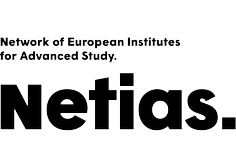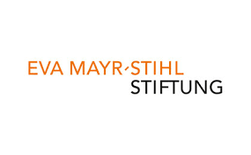Prof. Dr. Jay S. Siegel
Chemistry
External Senior Fellow
Alexander von Humboldt Fellow
March - June 2019
CV
Jay S. Siegel received his Ph. D. from Princeton (1985), was a Swiss Universities Fellow at ETH Zurich (1983-4), and NSF-CNRS postdoctoral fellow at the University of Louis Pasteur in Strasbourg (1985-6). He began as Assistant Professor of Chemistry (1986) at UCSD, was promoted to Associate Professor (1992) and Full Professor (1996). In 2003, he was appointed as Professor and codirector of the Organic chemistry institute of the University of Zurich (UZH) and Director of its laboratory for process chemistry research (LPF). He served as Dean of Studies and Head of the Research Council for the Faculty of Sciences at UZH. He moved to Tianjin University in 2013 and joined the Schools of Pharmaceutical and Life Sciences into a new Health Science Platform. He was Qianren Scholar (2013-15) and recipient of the Chinese National Friendship Medal (2015). He was named one of the 40 most influential foreign experts in China's 40 years of opening (2018). His research focuses on molecular design & synthesis, specializing in structural chemistry and stereochemistry of supramolecular architectures. (H-index 61; cit. 13 K – Google scholar // H-index 54; cit. 11 K – ISI).
FRIAS Research Project
Triggered release of biologically active small molecules
Oxygen is among the most fundamental of biologically active molecules. Besides its most conspicuous role as the agent of respiration, it also plays a role in non-respiratory oxidative metabolism, aging, physiological homeostasis, and cell-cell signalling, Oxygen is special even in its basic electronic structure in so far as it adopts a paramagnetic diradical "triplet" ground state, but has a photochemically accessible diamagnetic singlet state. Each of these states have their own bio-active profile. Singlet oxygen being a key reactive oxygen species (ROS) in photodynamic therapy. A close cognate to diatomic oxygen is nitrous oxide, a diatomic with one nitrogen and one oxygen. Nitrous oxide is also a reactive species with a manifold of biological activities, most celebrated as a vasodialator.
The elementary reactions of oxygen and nitrous oxide with potential for use in creating triggered release agents include electronic conversion, electron transfer, radical chains and cycloadditions, Here specifically two kinds of cycloadditions will be the focus: Diels-Alder like and carbene like. The Diels-Alder-like reaction involves a chemical partner containing two conjugated carbon-carbon double bonds (so called dienes, C=C-C=C) that can adopt a C-shaped confirmation; the small molecule can form two bonds bridging the ends of the "C" resulting in a ring. The carbene-like reaction involves one end of the oxygen diatomic making bonds across a simple carbon-carbon double bond (alkene, C=C) to form a small strained triatomic ring. In each case, the forward reaction can be viewed as a capture and the reverse as a release of the small molecule. Understanding the physical organic chemistry of these reactions offers insight into how one can trigger release of small molecules like O2 and NO.
Aromatic chemistry comes into play here because the archetypal aromatic, benzene, comprises a special arrangement and energetic stability of canonically three carbon-carbon double bonds in a six-carbon-atom ring. Therefore benzenoid molecules have the possibility to react as dienes or alkenes, in particular endoperoxides are one class of products accessible by cycloaddition chemistry. Tailoring the character of the aromatic partner influences the reaction energy profile, which opens up the possibility to bias the capture vs the release state. When the captured state is thermodynamically higher in potential energy, but kinetically trapped by a higher energy reaction transition state, then an agent can trigger release by catalyzing the reaction.
In biological systems, selectivity can be an important additional factor in developing a medicinally relevant agent. Stereochemistry and chirality are encoded into the building blocks of biology. They underpin all biologically relevant molecular recognition processes. Taken together, principles of physical organic chemistry, aromatic chemistry and stereochemistry enrich the development of a bioactive agent suitable for the triggered release of oxygen or nitrous oxide in a specific electronic state. Extensions of this work will be to use these new tools to help understand biological processes wherein ROS or NO are key reactive intermediates.





